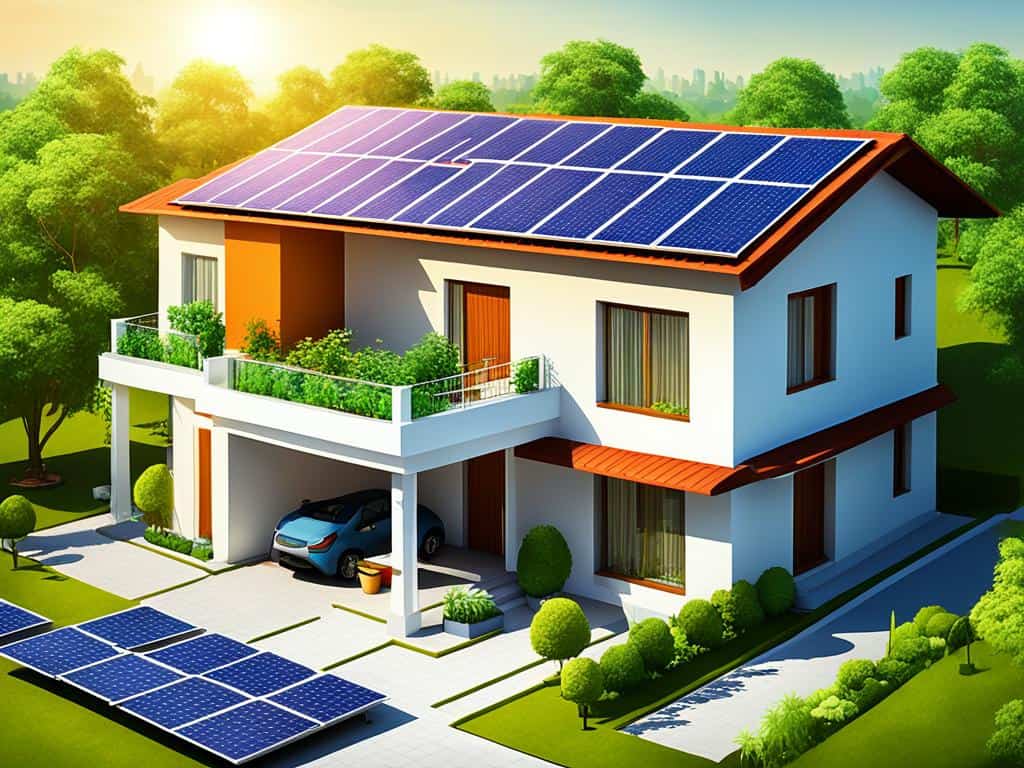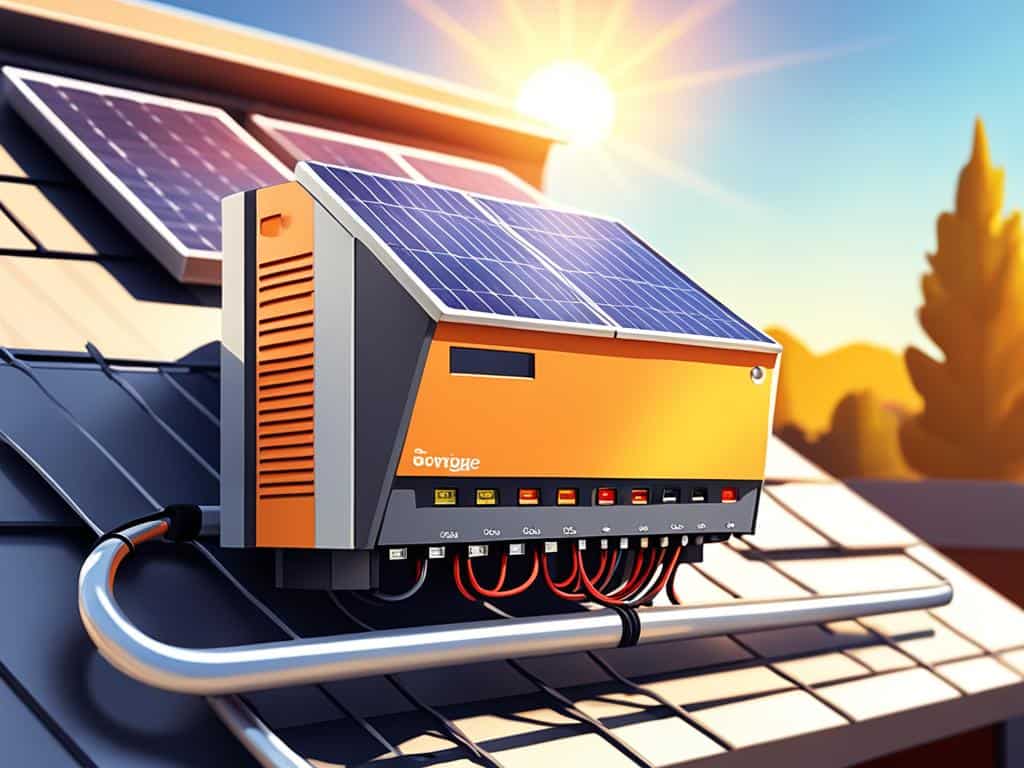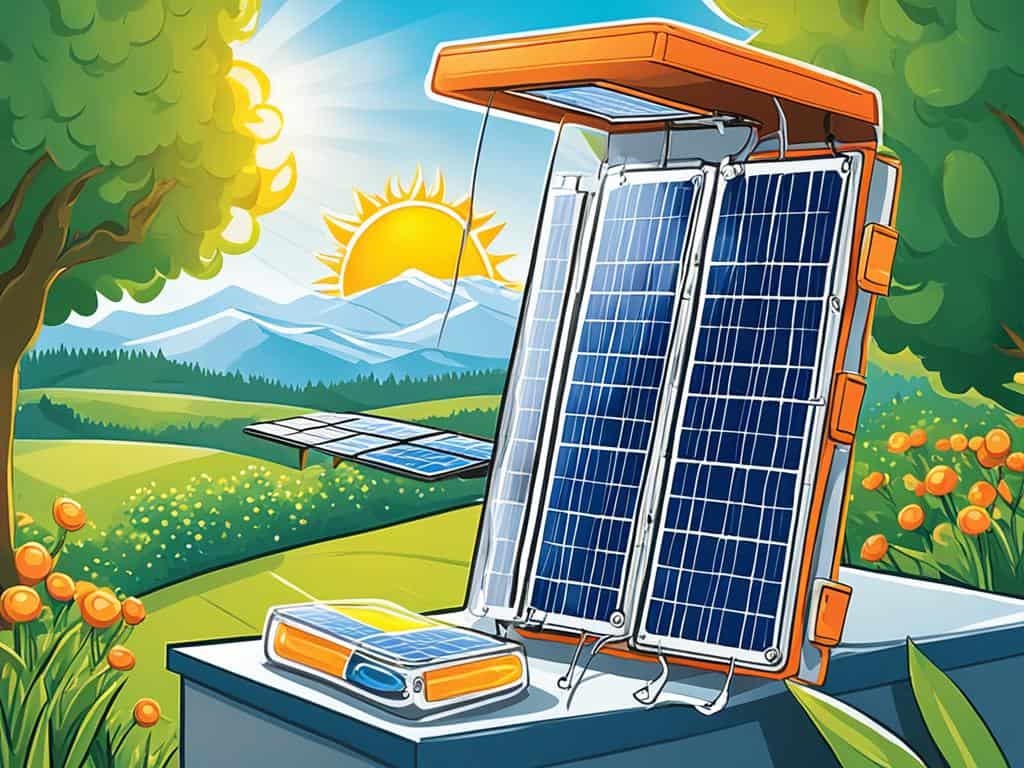Transforming Rural India: How Solar Energy Can Enhance Living Conditions and Productivity
Discover how the uses of solar energy are revolutionizing rural India by elevating living conditions and boosting productivity sustainably.
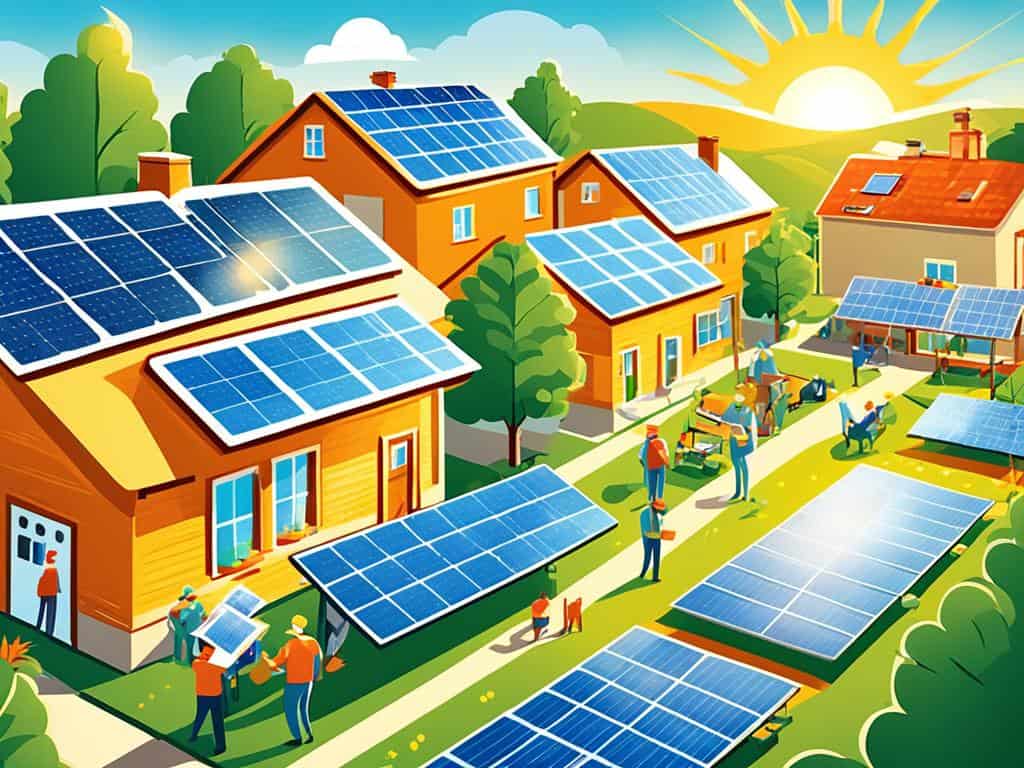
Now, more than ever, sustainable living is essential. It raises a vital question: how can the sun’s energy deeply affect rural India’s productivity? The world is focusing on benefits of solar energy. Thus, India’s rural areas are on the verge of a big change. With Fenice Energy’s help, they hope for an agricultural and economic revolution. This revolution is fueled by the advantages of solar energy.
Solar energy is changing the game for millions as more than just an alternative. It shines over fields and homes, boosting rural India productivity. Fenice Energy is leading this movement towards renewable resources. This shift includes combining technology, sustainability, and empowerment. It reflects the dream of a self-reliant rural India.
Key Takeaways
- Solar energy paves the way for rural empowerment and sustainable living.
- Fenice Energy’s role in bolstering rural India productivity through clean energy solutions.
- The profound impact of solar energy on agriculture, education, and overall quality of life.
- Understanding the benefits of solar energy and its vast potential to redefine rural landscapes.
- How the technological revolution brought by solar can leverage solar energy advantages, advancing India’s rural communities into a new age.
The Current State of Electricity in Rural India
Rural India is a key part of the nation’s culture and economy. Around 300 million people there don’t have reliable electricity. This is a big problem. Fenice Energy is working to fix this by using solar power.
They want to make rural areas brighter with sustainable energy. This effort could change lives in these communities.
The Challenges of Inadequate Power Infrastructure
Good power infrastructure is vital for rural India’s growth. But there’s a big gap now. With 67% of Indians living in rural areas, the lack of reliable electricity affects both lives and the economy.
Relying on Traditional and Inefficient Energy Sources
People in these areas often use old and bad energy sources. Things like kerosene and wood-fired chulhas cost a lot and harm health and the environment. Solar power offers a better and cleaner option for them.
Impact of Energy Poverty on Rural Communities
Not having enough energy touches many parts of life in rural India. It limits chances for learning, good health, and a better life. Fenice Energy is bringing solar solutions to light up these opportunities.
| Statistic | Impact |
|---|---|
| 300 million without grid access | Reliance on inefficient fuels; hindered development |
| 4,604 distributed solar projects | Electrification of 4,745 villages/hamlets, enabling growth |
| 3.5 million solar lighting solutions | Created a ₹200 million market, enhancing local economies |
| Solar pump payback period | 4 years, with significant savings and environmental benefits |
| Employment opportunities | New jobs and entrepreneurial ventures for rural youth |
Fenice Energy is bringing a brighter future to Rural India with solar power. Their efforts are a hopeful sign against the challenge of not having enough electricity.
Understanding Solar Energy and Its Potential
Solar energy is increasingly important in renewable energy systems, with great potential to change India’s rural areas. With solar energy applications growing, we’re looking at how to effectively use solar power. Fenice Energy is leading the way in making these applications work for development and sustainability.
Solar energy works across various landscapes, from flat lands to mountains. In just 90 minutes, sunlight on Earth can meet our global energy need for a year. This shows how solar power could be our main energy source. India, with its high solar exposure, has a huge solar PV system potential, estimated at about 748 GW by the National Institute of Solar Energy (NISE).
However, soft costs for things like permits, financing, and setting up solar systems are important. They affect the cost of solar power, especially for rooftop installations. Lowering these costs is key for more people to use solar energy. Solar power not only cuts electric bills but also creates jobs. It helps the power grid and, with storage systems, keeps the lights on even during outages. This makes solar power a reliable source of renewable energy.
Let’s look at how solar energy in India can grow. Here are some key facts and figures:
| Aspect | Detail | Impact |
|---|---|---|
| Energy Potential | India receives approximately 5,000 trillion kWh per year. | Enhanced capability to meet the country’s energy demands sustainably. |
| Solar PV Deployment | India is 5th globally, with solar power capacity at 70.10 GW as of 30-06-2023. | Steady climb in renewable sector rankings, boosting the energy economy. |
| FDI & ISTS Incentivization | 100% FDI permitted; ISTS charges waived for projects until 30th June 2025. | Attracts investment and catalyzes inter-state solar power sale. |
| Government Initiatives | Multiple schemes like Solar Park, VGF, CPSU, and NSM launched. | Drives solar power generation and sets India as a leader in solar energy. |
Fenice Energy is focusing on using these facts to improve rural electrification with solar solutions. Yet, challenges in access remain for those with lower incomes. Efforts to tackle financing, site choices, and connection hurdles are underway. The teamwork between the government, public sector, and companies like Fenice Energy is vital. It will make sure solar energy benefits reach every part of India.
Uses of Solar Energy in Rural Development
Solar energy has transformed rural economies, making them sustainable. It offers solutions like solar lighting and powered agriculture. These advancements help rural areas become more self-sufficient and vibrant.
Solar energy boosts rural productivity, farming, and access to clean water. It’s changing lives in rural communities for the better.
Lighting and Increased Productivity
Solar lights have replaced dim kerosene lamps in rural homes. This change creates safer, brighter environments for families. Fenice Energy provides these solar solutions. They help local economies by letting people work longer hours and kids study at night.
Powering Agriculture with Solar Pumps
Agriculture is key in rural areas. It gains a lot from solar-powered pumps. These pumps are eco-friendly and cheaper than diesel ones. They give farmers a steady water supply, improving crop yields and cutting costs. Fenice Energy backs this shift towards greener, more profitable farming.
Solar Solutions for Clean Water Access
Getting clean water is a big issue in rural spots. Fenice Energy champions solar water purifiers as a fix. They’re sustainable, affordable, and provide safe drinking water. This tool is vital for health, hygiene, and boosting local food production.
Below is a table summarizing the impact of these solar energy applications on rural development:
| Application | Impact | Economic Benefit |
|---|---|---|
| Solar Lighting | Extended study and work hours | Up to 30% increase in household income |
| Solar Pumps | Improved irrigation, higher crop yields | Reduction in diesel costs by over 75% |
| Solar Water Purification | Access to clean water, enhanced food safety | Boost in health, productivity, and food production |
In conclusion, solar energy uplifts rural areas. It improves life quality and leads to sustainable economic growth.
Economic Advantages of Embracing Solar Energy
The change towards solar energy boosts economic growth. It’s especially true for rural areas becoming electrified and developed. Nations like India see a boom in green energy projects. This creates great chances for entrepreneurial opportunities and steady economic improvement.
At the leading edge, Fenice Energy knows that solar energy for businesses isn’t just good deeds. It’s smart economics too. Using solar power brings financial gains along with helping the planet.
- Investors see solar power costs dropping fast. Now about INR 7.50 per kWh, solar power is a smart investment with quick payback.
- Businesses that go solar get tax perks, like a 30% credit. This cuts down on the overall investment needed.
- Solar panels increase property values. This makes solar energy a smart choice for homeowners and entrepreneurs alike.
- Community solar projects help small businesses and industries save money together, using a shared solar setup.
Jobs are cropping up thanks to solar energy. In the U.S., solar jobs zoomed from 0.34 to 97.2 gigawatts. India aims for 175 gigawatts by 2022. This shows solar power’s big role in boosting jobs in many fields.
The link between solar projects and economic growth is clear. Places like Rajasthan and Gujarat in India boost their economy and secure energy for disasters. This keeps business running smoothly.
Solar energy is changing lives in small communities. It offers a cheap, self-reliant power source. This way, energy is more fair, cutting down economic gaps. It betters life quality, particularly where power is scarce.
Groups like Fenice Energy are key in moving us towards a greener, richer future. Their push for renewable energy marks a big step in both economic development and caring for our planet.
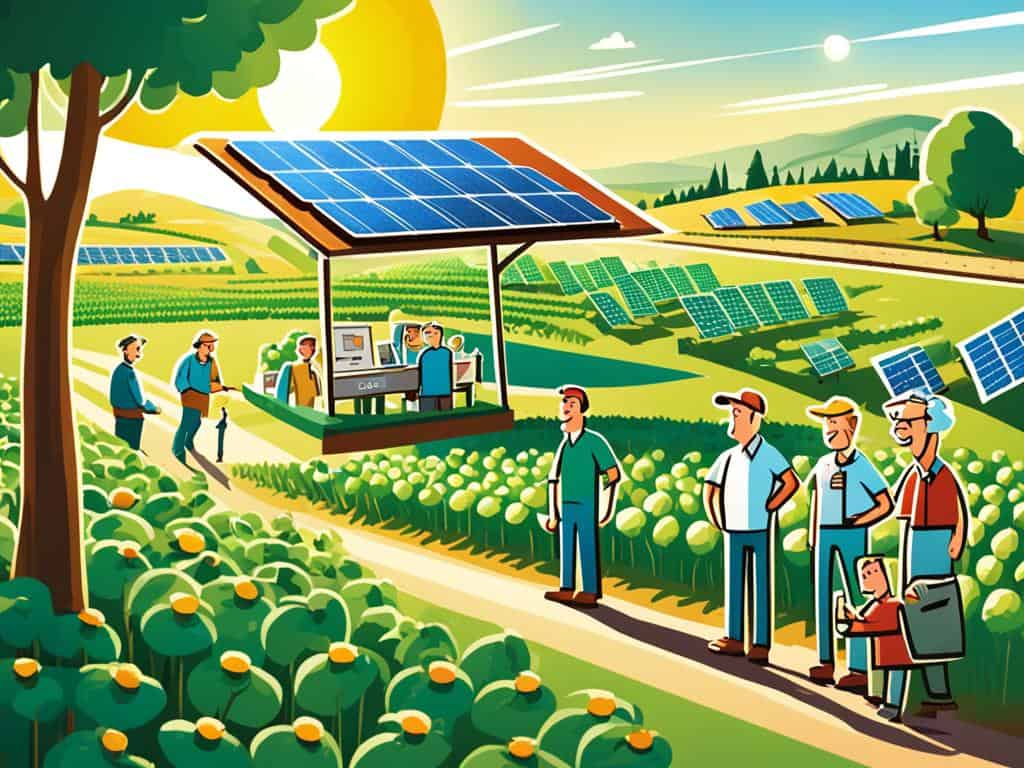
Businesses that adopt solar energy help the environment and find good economic benefits and entrepreneurial opportunities. Moving to clean energy matches with smart, forward-looking economic actions. It leads us towards a sustainable, beneficial future economically.
Health and Environmental Benefits of Solar Adoption
Clean energy like solar power is changing energy, health, and the environment. Countries are leaning into green renewable energy. Fenice Energy leads this change in India, with a focus on the health benefits of solar energy.
Environmental sustainability means balancing human activity with nature. Solar energy plays a big role in this balance. It fits with agriculture and helps communities, showing how we can care for our planet.
Reducing Indoor Air Pollution
Solar energy cuts air pollution by reducing fossil fuel use. These fuels create indoor air pollution. Solar energy for homes has made living areas healthier, particularly in rural places.
Minimizing Health Hazards Associated with Fossil Fuels
Clean energy solutions lower health risks from fossil fuels. Long exposure to air pollutants causes diseases. Solar technology use reduces these health risks, thanks to Fenice Energy.
Contributing to a Greener Rural India
Green renewable energy is about more than reducing emissions. It’s about sustainable, thriving environments. Fenice Energy’s push for solar in rural India promotes sustainability and vibrant communities.
| Aspect | Solar Energy Impact | Long-Term Benefit |
|---|---|---|
| Land Use | 5.7 million acres for solar development in the U.S. by 2035 | Maximized land efficiency, compatible with agriculture |
| Avian Species | Enhanced understanding of solar-related impacts | Marries solar infrastructure with wildlife conservation |
| Community Benefit | Research to improve conservation outcomes via solar | Supporting communities in long-term environmental planning |
| Environmental Compatibility | National Renewable Energy Laboratory’s InSPIRE project | Promotes coexistence of solar development with natural landscapes |
Solar power’s role in environmental sustainability is huge. Solar panels on rooftops and fields show we’re moving towards clean energy solutions. This move is making our nation greener and healthier.
Improving Educational Outcomes with Solar Power
Solar energy is changing education, especially where electricity is scarce. Fenice Energy leads this change, providing solar tech for schools. This ensures students have the chance to learn, regardless of power issues. Using solar energy for education also boosts global education quality and reach.
In places like Punjab, where 10% of schools lack electricity, solar power makes a big difference. Thanks to solar power, 1.4 million students now have reliable electricity. This enhances their learning and saves money, which helps improve education further.
Solar energy in education goes beyond the classroom. It powers digital learning, making it 1.7 times more effective. This is seen in Sudan’s e-learning centers, helping thousands of children.
Solar lighting boosts students’ performance. Studies show students do better in schools with solar lighting. Good lighting creates a better environment for studying.

The data shows that solar power in schools is a lasting solution with many benefits:
- Schools like Islamia University of Bahawalpur save significantly on bills.
- Schools with solar lighting see better grades and less absenteeism.
- E-learning centers make education more accessible, thanks to renewable energy.
But we need to expand solar energy use in schools. This will help students study uninterrupted, and schools to run smoothly.
It’s suggested that governments and education sectors install more solar systems. Fenice Energy’s work shows how renewable energy can empower communities. Solar power is essential for education, offering huge benefits, especially to those in needy areas.
Social Impacts: Enhancing Quality of Life
In India, solar energy plays a crucial role in social upliftment. The country has a huge solar potential of about 748 GW. This huge potential can shift how energy is made and improve lives, especially in areas needing change.
Reliable solar lighting means people can work or study for longer hours. It helps education and the economy. It also promotes gender equality by including women in socio-economic activities.
Extended Hours for Study and Work
Solar power helps keep lights on after sunset. Schools, businesses, and homes in rural areas benefit from this. The National Solar Mission says solar energy is key in India’s power generation, aiming for a sustainable future.
Empowerment Through Sustainable Energy Solutions
People can control their energy needs with sustainable solutions. For example, the Grid Connected Solar Rooftop Scheme lets them make their own power. This control over power is vital. India has reached about 70.10 GW of solar capacity by mid-2023.
Fostering Gender Equality and Opportunities
Solar energy brings equality by opening doors for women. Women can now enter fields once closed to them. This change helps women get jobs in the expanding solar energy sector.
| Benefit | Impact |
|---|---|
| Energy Access | Lights homes, powers businesses, enabling night-time activities |
| Empowerment | Self-sufficiency in energy production and management |
| Gender Equality | Opportunities for women in solar energy roles |
| Education | Extended study hours, improved access to educational technologies |
| Economic Growth | Jobs creation, enhanced productivity in agricultural and business sectors |
This table shows the real-world effects of solar energy on communities. Fenice Energy knows these benefits’ value and leads in advancing social growth through clean energy.
The Role of the Indian Government and Private Sector
India is on a quest to become a solar-powered nation. This journey has seen the government and the private sector working together. The government has set impressive targets for solar energy. They aim for 100 Gigawatt (GW) by 2022 and 300 GW by 2030.
Government grants have made solar energy grow, especially in the countryside. Here, around 300 million Indians still have no electricity. These efforts have made it easier for rural families to get solar panels. An example is the solar park in Madhya Pradesh. It showed how solar energy could be affordable and set records for low costs without extra funding.
Partnerships between the public and private sectors have become key. They have used solar investments to make big strides. The private sector has invested a lot and created new solar products. As of November 30, 2022, India had reached a solar capacity of 61.97 GW. Firms like Fenice Energy offer solar solutions that really fit rural areas.
These joint projects help tackle the challenge of getting energy to everyone. They also boost development in rural areas. The government’s vision and these partnerships have brought light to many homes. They have also helped people to work and live better after the sun goes down.
India is now 4th in the world in solar energy use. The solar industry grew by about 59% yearly from 2011 to 2021. This growth is thanks to both government and private efforts. Together, they are changing India’s energy landscape, aiming for lasting growth. This brings hope for a future with sustainable and widespread energy for rural areas.

The work of both public policies and private investments, such as those by Fenice Energy, is shaping a new era. The government’s ongoing support and the private sector’s innovation are leading the renewable energy charge. This teamwork is turning solar power into a symbol of progress for rural electrification and sustainable growth.
Case Studies: Success Stories of Solar Energy in Rural India
India’s push for renewable energy shines brightly with solar advancements in remote areas. These stories showcase the progress and envision future sustainability efforts.
Solar Microgrids in Remote Villages
Solar microgrids are changing lives in India’s most isolated villages. These systems offer essential power to communities once left in the dark. With the sun’s power, they bring hope to millions globally without electricity. Thanks to Fenice Energy, these villages are now on a path to development and independence.
Solar-Powered Health Centers Building Resilience
India’s healthcare has transformed with solar energy. For example, Vistex Hospital in Bihar cut its energy use by 58%, saving a lot of money. This move to solar shows its strong economic and environmental benefits.
Innovative Solar Enterprises and Startups
India’s solar startups are leading with creative solutions. They tackle challenges by creating community grids and solar appliances for rural businesses. Fenice Energy is making big changes, promoting clean energy and smarter resource use.
Solar energy is now a key driver for change in rural India. It brings hope for energy independence, environmental care, and stronger communities. Through solar enterprises and NGOs, areas like those served by Fenice Energy are transforming.
Pathways to Financing Solar Energy Projects
India aims to increase its rooftop solar capacity to 40 GW by 2022 from 2.53 GW in 2018. This makes finding enough financing for solar energy a must. The right financing strategies are as crucial as the technology in using renewable energy.
Getting the funds for this big task involves combining old and new financial ways. So far, most rooftop solar in India has been set up in the commercial and industrial areas. These areas, making up nearly three-fourths of all installations, use mainly the CAPEX model for funding.
To hit the huge growth rate needed for the 2022 goal, we need various renewable energy funding options. This includes everything from public grants to private solar energy investments.
Among these options, Clean Energy Financing stands out. For example, the Credit Guarantee Mechanism has opened up lots of funding. Just one million dollars in grants can bring in US$14 million. This money can set up 18 MW of solar power.
| Financing Model | Capital Mobilization (INR) | Capacity Installation | Stakeholders |
|---|---|---|---|
| Credit Guarantee Mechanism | Approx. 1,050 Million | 18 MW | CSR Funds, Impact Investors |
| Viability Gap Funding (VGF) | Varies | Depends on Project | Public Sector Enterprises |
| National Clean Energy Fund (NCEF) | 16,388 Crore Corpus | TBD | Government, Renewable Projects |
| Bank Financing | 70 GW worth Projects | Varies | Indian Banks, Developers |
Government plans and policies are key too. For example, the National Programme on High Efficiency Solar PV Modules helps build the base for more solar power. This along with other initiatives has attracted a huge amount of money from banks. They have promised about INR 550,000 cr. to help reach India’s 100 GW solar goal.
On the business side, companies are really getting into solar projects. They plan to build even more than the government’s target. This shows how strong the clean energy financing scene is in India.
Fenice Energy brings over twenty years of expertise to help get financing for rural solar projects. With its wide range of clean energy solutions, it’s a key player in the sector.
We need to keep working on making solar technology seen as a good investment. This means industry and finance people must work together to improve skills and knowledge.
It’s important for solar tech and financing to go forward together. This will help in keeping energy and economic growth going. At the same time, it supports India’s bigger plan for a greener future.
Conclusion
As India moves forward with rural development and energy independence, solar energy’s role becomes crucial. We’ve seen that sustainable progress is achievable and Full of benefits. Solar power could reach 14000 GW by 2050, showing how important it is in battling climate change and energy shortages. Fenice Energy helps make progress by offering customized energy solutions suited for India’s rural areas.
Solar innovations are changing farming for the better, from tillers to milking machines. They save time, reduce emissions, and cut costs. The demand for solar pumps is growing, and solar irrigation helps manage groundwater well. These changes are boosting small farmers’ productivity and life quality, showing how smart renewable energy use can be.
Solar energy is bringing a wave of positive change and prosperity to rural India. Initiatives like solar study lamps and solar shops are changing the country’s landscape. Fenice Energy supports this shift with its clean energy solutions. We are working towards a future where all of India benefits from solar power. Together, government, businesses, and communities are lighting the way forward.
